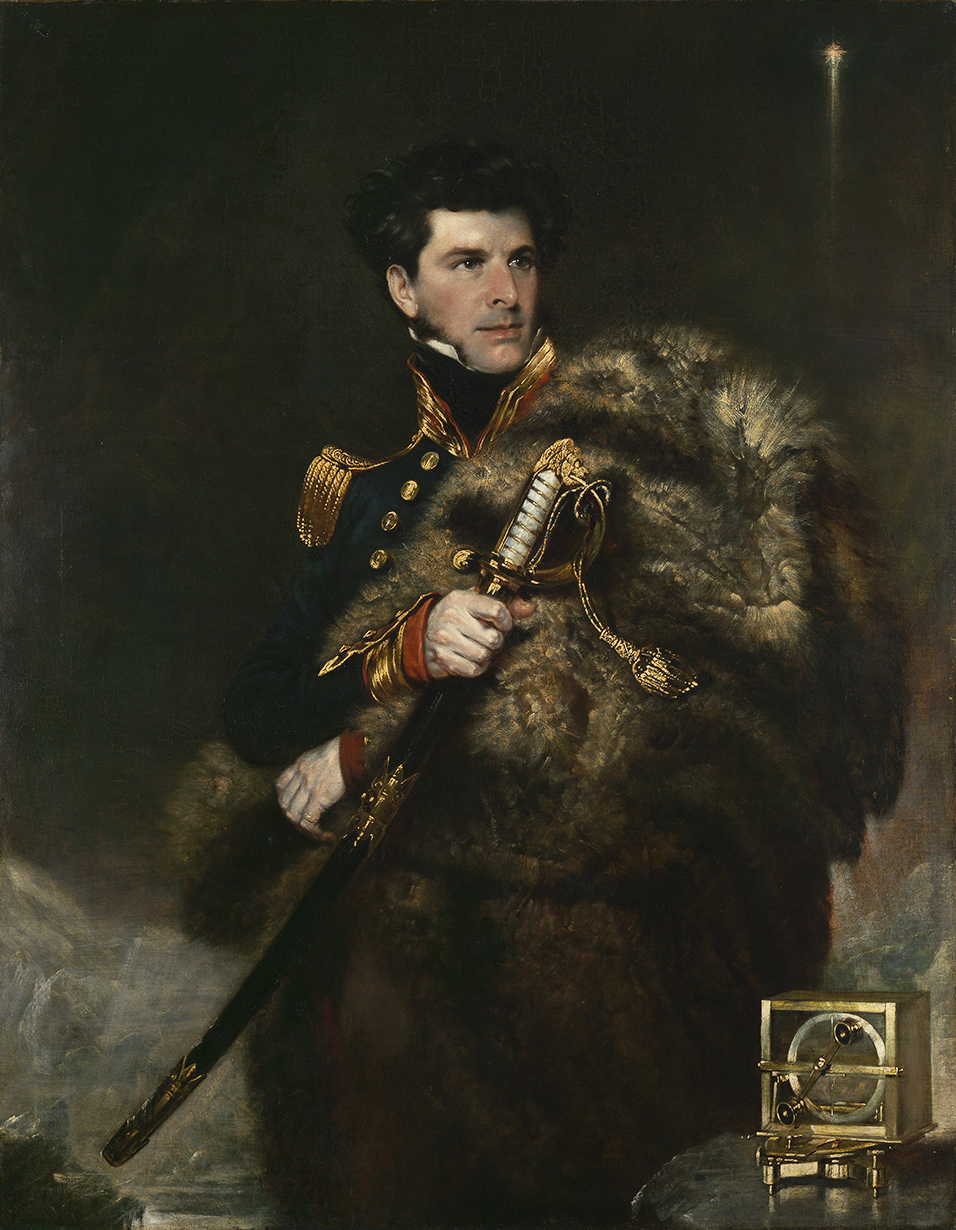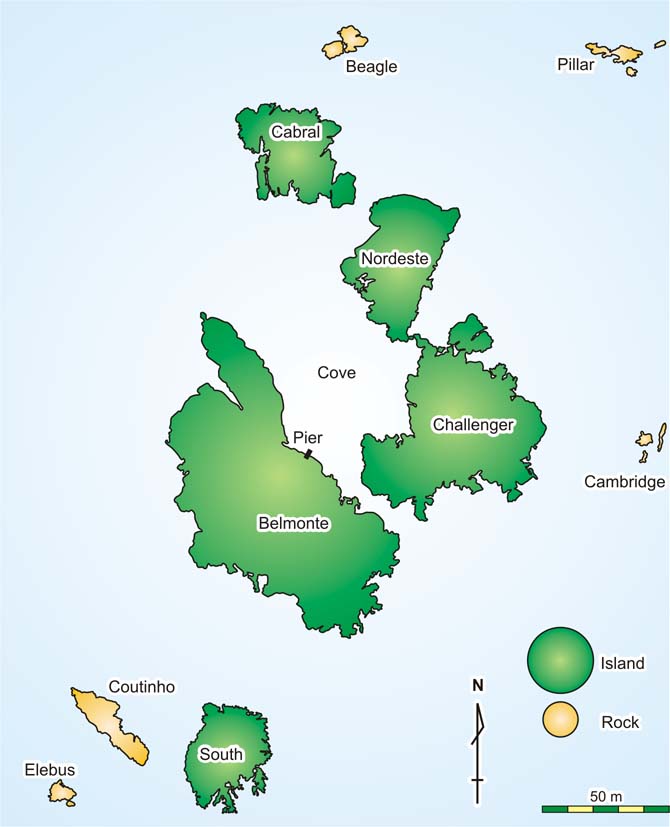|
The Botany Of The Antarctic Voyage Of H.M. Discovery Ships Erebus And Terror
The ''Flora Antarctica'', or formally and correctly ''The Botany of the Antarctic Voyage of H.M. Discovery Ships Erebus and Terror in the years 1839–1843, under the Command of Captain Sir James Clark Ross'', is a description of the many plants discovered on the Ross expedition, which visited islands off the coast of the Antarctic continent, with a summary of the expedition itself, written by the British botanist Joseph Dalton Hooker and published in parts between 1844 and 1859 by Reeve Brothers in London. Hooker sailed on HMS ''Erebus'' as assistant surgeon. The botanical findings of the Ross expedition were published in four parts, the last two in two volumes each, making six volumes in all: * Part I ''Botany of Lord Auckland's Group and Campbell's Island'' (1844–1845) * Part II ''Botany of Fuegia, the Falklands, Kerguelen's Land, Etc.'' (1845–1847) * Part III ''Flora Novae-Zelandiae'' (1851–1853) (2 volumes) * Part IV ''Flora Tasmaniae'' (1853–1859) (2 volumes) All ... [...More Info...] [...Related Items...] OR: [Wikipedia] [Google] [Baidu] |
Ross Expedition
The Ross expedition was a voyage of scientific exploration of the Antarctic in 1839 to 1843, led by James Clark Ross, with two unusually strong warships, HMS ''Erebus'' and HMS ''Terror''. It explored what is now called the Ross Sea and discovered the Ross Ice Shelf. On the expedition, Ross discovered the Transantarctic Mountains and the volcanoes Erebus and Terror, named after his ships. The young botanist Joseph Dalton Hooker made his name on the expedition. The expedition inferred the position of the South Magnetic Pole, and made substantial observations of the zoology and botany of the region, resulting in a monograph on the zoology, and a series of four detailed monographs by Hooker on the botany, collectively called ''Flora Antarctica'' and published in parts between 1843 and 1859. The expedition was the last major voyage of exploration made wholly under sail. Among the expedition's biological discoveries was the Ross seal, a species confined to the pack ice of Antarcti ... [...More Info...] [...Related Items...] OR: [Wikipedia] [Google] [Baidu] |
Darwinism
Darwinism is a scientific theory, theory of Biology, biological evolution developed by the English naturalist Charles Darwin (1809–1882) and others, stating that all species of organisms arise and develop through the natural selection of small, inherited variations that increase the individual's ability to compete, survive, and reproduction, reproduce. Also called Darwinian theory, it originally included the broad concepts of transmutation of species or of evolution which gained general scientific acceptance after Darwin published ''On the Origin of Species'' in 1859, including concepts which predated Darwin's theories. English biologist Thomas Henry Huxley coined the term ''Darwinism'' in April 1860. Terminology Darwinism subsequently referred to the specific concepts of natural selection, the Weismann barrier, or the central dogma of molecular biology. Though the term usually refers strictly to biological evolution, creationism, creationists have appropriated it to refer to ... [...More Info...] [...Related Items...] OR: [Wikipedia] [Google] [Baidu] |
Saint Peter And Saint Paul Archipelago
The Saint Peter and Saint Paul Archipelago ( pt, Arquipélago de São Pedro e São Paulo ) is a group of 15 small islets and rocks in the central equatorial Atlantic Ocean.The scientific station of São Pedro and São Paulo Archipelago - Brazil Alvarez, Cristina E., Melo, Julio E., Mello, Roberto L. Retrieved on June 6, 2009. It lies in the Intertropical Convergence Zone, a region of the Atlantic characterized by low average winds punctuated with local thunderstorms. It lies approximately from the nearest point of mainland |
Cape Verde
, national_anthem = () , official_languages = Portuguese , national_languages = Cape Verdean Creole , capital = Praia , coordinates = , largest_city = capital , demonym = Cape Verdean or Cabo Verdean , ethnic_groups_year = 2017 , government_type = Unitary semi-presidential republic , leader_title1 = President , leader_name1 = José Maria Neves , leader_title2 = Prime Minister , leader_name2 = Ulisses Correia e Silva , legislature = National Assembly , area_rank = 166th , area_km2 = 4033 , area_sq_mi = 1,557 , percent_water = negligible , population_census = 561,901 , population_census_rank = 172nd , population_census_year = 2021 , population_density_km2 = 123.7 , population_density_sq_mi = 325.0 , population_density_rank = 89th , GDP_PPP ... [...More Info...] [...Related Items...] OR: [Wikipedia] [Google] [Baidu] |
Tenerife
Tenerife (; ; formerly spelled ''Teneriffe'') is the largest and most populous island of the Canary Islands. It is home to 43% of the total population of the archipelago. With a land area of and a population of 978,100 inhabitants as of January 2022, it is also the most populous island of Spain and of Macaronesia. Approximately five million tourists visit Tenerife each year; it is the most visited island in the archipelago. It is one of the most important tourist destinations in Spain and the world, hosting one of the world's largest carnivals, the Carnival of Santa Cruz de Tenerife. The capital of the island, , is also the seat of the island council (). That city and are the co-capitals of the autonomous community of the Canary Islands. The two cities are both home to governmental institutions, such as the offices of the presidency and the ministries. This has been the arrangement since 1927, when the Crown ordered it. (After the 1833 territorial division of Spain, until ... [...More Info...] [...Related Items...] OR: [Wikipedia] [Google] [Baidu] |
Madeira
) , anthem = ( en, "Anthem of the Autonomous Region of Madeira") , song_type = Regional anthem , image_map=EU-Portugal_with_Madeira_circled.svg , map_alt=Location of Madeira , map_caption=Location of Madeira , subdivision_type=Sovereign state , subdivision_name=Portugal , established_title=Discovery , established_date=1418-1419 , established_title2=Settlement , established_date2=c. 1425 , established_title3=Autonomous status , established_date3=30 April 1976 , named_for = en, wood ( pt, madeira) , official_languages=Portuguese , demonym= en, Madeiran ( pt, Madeirense) , capital = Funchal , government_type=Autonomous Region , leader_title1=Representative of the Republic , leader_name1=Irineu Barreto , leader_title2=President of the Regional Government of Madeira , leader_name2=Miguel Albuquerque , leader_title3=President of the Legislative Assembly , leader_name3=José Manuel Rodrigues , legislature= Legislative Assembly , national_representation=National ... [...More Info...] [...Related Items...] OR: [Wikipedia] [Google] [Baidu] |
Chatham Dockyard
Chatham Dockyard was a Royal Navy Dockyard located on the River Medway in Kent. Established in Chatham in the mid-16th century, the dockyard subsequently expanded into neighbouring Gillingham (at its most extensive, in the early 20th century, two-thirds of the dockyard lay in Gillingham, one-third in Chatham). It came into existence at the time when, following the Reformation, relations with the Catholic countries of Europe had worsened, leading to a requirement for additional defences. Over 414 years Chatham Royal Dockyard provided more than 500 ships for the Royal Navy, and was at the forefront of shipbuilding, industrial and architectural technology. At its height, it employed over 10,000 skilled artisans and covered . Chatham dockyard closed in 1984, and of the Georgian dockyard is now managed as the Chatham Historic Dockyard visitor attraction by the Chatham Historic Dockyard Trust. Overview Joseph Farington (1747-1821) was commissioned by the Navy Board to paint a pa ... [...More Info...] [...Related Items...] OR: [Wikipedia] [Google] [Baidu] |
HMS Terror (1813)
HMS ''Terror'' was a specialised warship and a newly developed bomb vessel constructed for the Royal Navy in 1813. She participated in several battles of the War of 1812, including the Battle of Baltimore with the bombardment of Fort McHenry. She was converted into a polar exploration ship two decades later, and participated in George Back's Arctic expedition of 1836–1837, the successful Ross expedition to the Antarctic of 1839 to 1843, and Sir John Franklin's ill-fated attempt to force the Northwest Passage in 1845, during which she was lost with all hands along with . On 12 September 2016, the Arctic Research Foundation announced that the wreck of ''Terror'' had been found in Nunavut's Terror Bay, off the southwest coast of King William Island. The wreck was discovered south of the location where the ship was reported abandoned, and some from the wreck of HMS ''Erebus'', discovered in 2014. Early history and military service HMS ''Terror'' was a bomb ship built over ... [...More Info...] [...Related Items...] OR: [Wikipedia] [Google] [Baidu] |
Latitude
In geography, latitude is a coordinate that specifies the north– south position of a point on the surface of the Earth or another celestial body. Latitude is given as an angle that ranges from –90° at the south pole to 90° at the north pole, with 0° at the Equator. Lines of constant latitude, or ''parallels'', run east–west as circles parallel to the equator. Latitude and ''longitude'' are used together as a coordinate pair to specify a location on the surface of the Earth. On its own, the term "latitude" normally refers to the ''geodetic latitude'' as defined below. Briefly, the geodetic latitude of a point is the angle formed between the vector perpendicular (or ''normal'') to the ellipsoidal surface from the point, and the plane of the equator. Background Two levels of abstraction are employed in the definitions of latitude and longitude. In the first step the physical surface is modeled by the geoid, a surface which approximates the mean sea level over the ocean ... [...More Info...] [...Related Items...] OR: [Wikipedia] [Google] [Baidu] |
Marine Geography
Oceanography (), also known as oceanology and ocean science, is the scientific study of the oceans. It is an Earth science, which covers a wide range of topics, including ecosystem dynamics; ocean currents, waves, and geophysical fluid dynamics; plate tectonics and the geology of the sea floor; and fluxes of various chemical substances and physical properties within the ocean and across its boundaries. These diverse topics reflect multiple disciplines that oceanographers utilize to glean further knowledge of the world ocean, including astronomy, biology, chemistry, climatology, geography, geology, hydrology, meteorology and physics. Paleoceanography studies the history of the oceans in the geologic past. An oceanographer is a person who studies many matters concerned with oceans, including marine geology, physics, chemistry and biology. History Early history Humans first acquired knowledge of the waves and currents of the seas and oceans in pre-historic times. Observations on ... [...More Info...] [...Related Items...] OR: [Wikipedia] [Google] [Baidu] |
James Clark Ross
Sir James Clark Ross (15 April 1800 – 3 April 1862) was a British Royal Navy officer and polar explorer known for his explorations of the Arctic, participating in two expeditions led by his uncle John Ross, and four led by William Edward Parry, and, in particular, for his own Antarctic expedition from 1839 to 1843. Biography Early life Ross was born in London, the son of George Ross and nephew of John Ross, under whom he entered the Royal Navy on 5 April 1812. Ross was an active participant in the Napoleonic Wars, being present at an action where HMS ''Briseis'', commanded by his uncle, captured ''Le Petit Poucet'' (a French privateer) on 9 October 1812. Ross then served successively with his uncle on HMS ''Actaeon'' and HMS ''Driver''. Arctic exploration Ross participated in John's unsuccessful first Arctic voyage in search of a Northwest Passage in 1818 aboard ''Isabella''. Between 1819 and 1827 Ross took part in four Arctic expeditions under William Ed ... [...More Info...] [...Related Items...] OR: [Wikipedia] [Google] [Baidu] |






.jpg)

